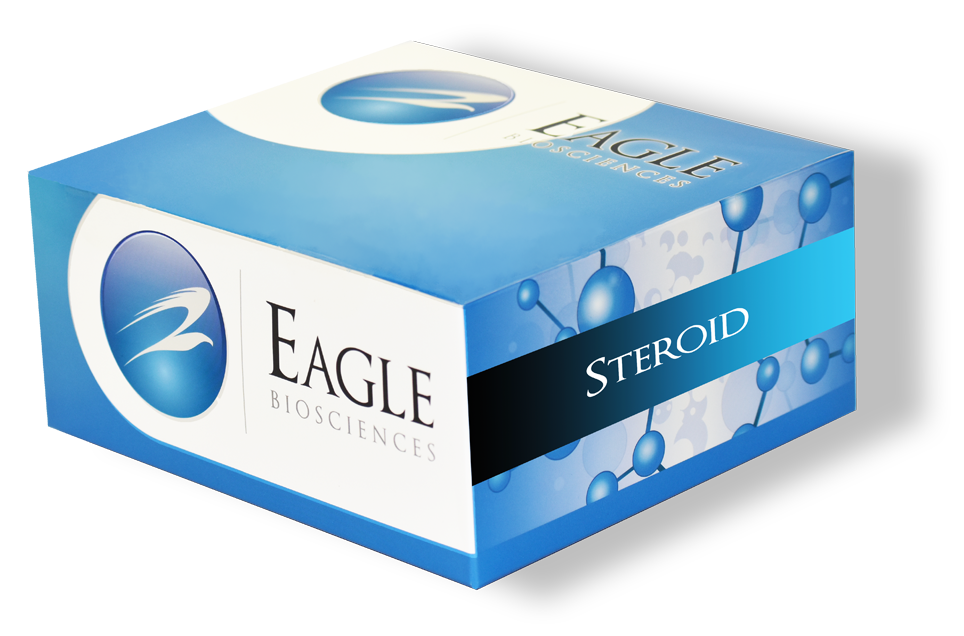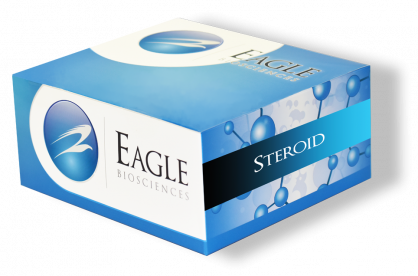DHEA-S Saliva Sensitive ELISA
The DHEA-S Saliva Sensitive ELISA is For Research Use Only
Size: 1×96 wells
Sensitivity: 0.07 ng/ml
Incubation Time: 2 hours
Sample Type: Human Saliva
Sample Size: 50 µl
Controls Included
Product manufactured in the USA
Assay Background
The adrenal gland produces three main groups of hormones: glucocorticoids, mineral-corticoids and sex hormones. Clinical assessment of adrenal male sex hormones had depended in the past primarily upon measurement of the 24 hour urinary excretion of 17-ketosteroids. These urinary excretory products are derived predominantly from the weak androgen, dehydroepiandrosterone (DHEA) and its sulfate (DHEA-S). DHEA is present in blood almost exclusively in its sulfated form DHEA-S. Preliminary studies to date have shown good correlation in most cases between urinary 17-ketosteroid values and serum DHEA-S. However, 17-ketosteroids do not always reflect production of adrenal or gonadal androgens. Under stressful situations, the metabolism of these steroids is affected, leading to excretion of non-17-ketosteroids. Also, certain drugs are known to produce the same effects. Under those conditions, the urinary 17-ketosteroid levels would underestimate the production rate of DHEA and DHEA-S by the gonads and adrenals. Lastly, but not least, the metabolites of the potent 17 β−ol-androgen, testosterone and dihydrotestosterone, contribute very little to urinary 17-ketosteroids in women.
Measurement of plasma DHEA-S may be used instead of urinary 17-ketosteroids in evaluating conditions of adrenal androgen excess. Normally the ovary contributes less than 10% to plasma DHEA-S levels, whereas, the adrenal contributes over 90%. These proportions do not change significantly in cases of hirsutism due to ovarian androgen excess in these cases, the ovary secretes excess of the potent 17β-ol-androgens: Testosterone and dihydrotestosterone. Therefore, to evaluate the origin of androgen excess in cases of hirsutism, the measurement of plasma DHEA-S and the 17 β-ol-androgens will be of greater value than measurement of urinary 17-ketosteroids.
For the differential diagnosis of Cushing’s syndrome, plasma DHEA-S and cortisol should be more informative than urinary 17-keto and 17-hydrosteroids. Elevation of plasma DHEA-S in this condition suggests a generalized state of adrenal overactivity. Carcinomas and adenomas of the adrenal have been associated with the highest plasma DHEA-S levels. Bilateral adrenal cortical hyperplasia frequently results in elevation of both DHEA-S and cortisol.
DHEA-S does not appear to be bound to proteins either in serum or saliva suggesting that DHEA-S exists in the free form.
In 1983 Vining, et. al demonstrated that hormones can enter saliva by a variety of mechanisms. For the unconjugated or neutral steroids the most common route is by rapid diffusion through the acinar cells and therefore their concentration suggests that they are independent of the rate of saliva flow. Conversely, for the conjugated or charged steroids like DHEA-S, the mode of entry is by diffusion between the tight junctions of the acinar cells and their salivary concentration suggest that they may be dependent on saliva flow. The DHEA-S EIA Kit uses a monospecific Anti-DHEA-S antibody and does not measure DHEA or other structurally related steroids.


